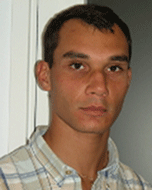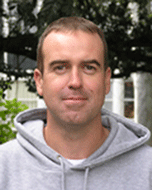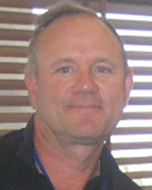Dynamic column breakthrough measurements for increasing LNG production efficiency with cryogenic pressure swing adsorption*
Paul Hofman A , Eric May B , Guillaume Watson C , Brendan Graham D and Mark Trebble EA School of Mechanical Engineering, The University of Western Australia, 35 Stirling Highway, Crawley WA 6009, Australia. Email: paul.hofman@uwa.edu.au
B School of Mechanical Engineering, The University of Western Australia, 35 Stirling Highway, Crawley WA 6009, Australia. Email: eric.may@uwa.edu.au
C School of Mechanical Engineering, The University of Western Australia, 35 Stirling Highway, Crawley WA 6009, Australia. Email: gwatson@mech.uwa.edu.au
D School of Mechanical Engineering, The University of Western Australia, 35 Stirling Highway, Crawley WA 6009, Australia. Email: brendan.graham@uwa.edu.au
E Department of Chemical Engineering, Curtin University of Technology, Bentley WA 6102, Australia. Email: m.trebble@curtin.edu.au
The APPEA Journal 50(2) 738-738 https://doi.org/10.1071/AJ09102
Published: 2010
Abstract
The use of natural gas as a primary energy source is rapidly increasing on a global scale. To economically transport natural gas over long distances and satisfy this increase in demand, efficient production of liquefied natural gas (LNG) is required. Prior to the liquefaction of natural gas to produce LNG, it is highly desirable to remove N2 and CO2 impurities from the reservoir feed gas. Typically, CO2 is removed using a water-based amine solution. The regeneration of this amine solution is both energy intensive and costly. Furthermore, the amine solutions used are undesirable from health and environmental standpoints. Nitrogen is generally not removed prior to the liquefaction and must be separated from the end-flash vapour produced with the LNG. Conventionally this requires the construction of distillation towers operating at cryogenic conditions.
In the environment of a cryogenic gas plant, adsorption-based processes for separating gases have several natural advantages over other methods. However, very little work has been done studying the efficiency of adsorption processes at the pressures and temperatures found in LNG plants. We have constructed a dynamic column breakthrough apparatus capable of measuring equilibrium adsorption and kinetics of adsorption at temperatures between 190 and 298 K and pressures to 1 MPa. This system was used to study the adsorption behaviour of N2, CO2 and CH4 on carbon molecular sieves and zeolites. This presentation will describe the measurement results and the challenges that were overcome as well as future plans to construct a larger scale apparatus.
Keywords: LNG, natural gas, dynamic column breakthrough, adsorption, separation, carbon dioxide capture

Paul Steven Hofman is presently a PhD student at the University of Western Australia and is around two years into his project titled: increasing LNG production efficiency through cryogenic pressure-swing adsorption. Paul moved from the city of Wollongong, to undertake a PhD in the field of gas process engineering, after completing his advanced Bachelors degree in nanotechnology with Class 1 Honours at the University of Wollongong. Before studying at university, he completed an apprenticeship at Wollongong TAFE as an electrical tradesperson. |

Eric is currently the Chevron Chair in Gas Process Engineering at UWA. Eric completed his BSc (Hons) and PhD at UWA and was awarded the 2004 Robert Street Prize by UWA for the thesis that made the most significant contribution to its field. Following his PhD, Eric was a research fellow at the National Institute of Standards and Technology in Maryland funded in part by an American Australian Association Education Fellowship. Eric has an interest and conducts research in: hydrocarbon process engineering; adsorption; CO2 sequestration; flow assurance; measurement and prediction of fluid properties; and, fundamental metrology. |

Prior to joining UWA, Guillaume completed his PhD and MS degree of Process Engineering at Pau University in France, where he was also an assistant lecturer in automation and thermodynamics for two years. Guillaume also worked as a process engineer in alcohol production for Groupe Quartier-Français at La Réunion Island in 2004 for six months. He has an interest in chemical and process engineering—especially for the oil and gas industry—as well as in the measurement and prediction of thermophysical properties of high-pressure fluids. He has authored several publications in the Journal of Chemical Engineering Data, Fluid Phase Equilibria and the International Journal of Thermophysics. |

Brendan Graham is presently employed as an assistant professor in the Centre for Energy at UWA. He obtained both his undergraduate degree and PhD from UWA, with a focus on analytical chemistry. He worked for Agilent Technologies as a customer trainer before moving into the oil and gas industry where, amongst other projects, he has consulted for major oil companies on their emulsion issues in West Africa. In his present academic position Brendan’s research interests lie primarily in flow assurance and include the study of the influence of oil resins in asphaltene stability as well as hydrate formation/stability and heavy oil transport issues. |

Mark is presently an adjunct professor in chemical engineering at Curtin University of Technology and works as an independent contractor to industry in the field of process simulation and gas plant design. He is the previous Gas Program Research Program Leader for WAERA (Western Australia Energy Research Alliance) and he remains actively involved in a number of gas-related research projects in WA. Mark has 30 years of industrial experience primarily related to natural gas. Mark holds two US patents, two international patents in the area of ethane recovery and he has 35 journal publications to-date. |
References
Breck, D.W., 1974—Zeolite Molecular Sieves. New York: Wiley.Habgood, H.W. (1958). The kinetics of molecular sieve action: Sorption of nitrogen-methane mixtures by Linde Molecular Sieve 4A. Canadian Journal of Chemistry 36, 1384–97.
Rajendran, A., Kariwala, V., and Shamsuzzaman, F. (2008). Correction procedures for extra-column effects in dynamic column breakthrough experiments. Chemical Engineering Science 63, 2696–706.
Sircar, S. (2007). Recent developments in macroscopic measurement of multicomponent gas adsorption equilibria, kinetics, and heats. Industrial and Engineering Chemical Research 46, 2917–27.


